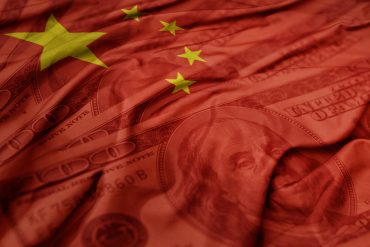
- Investing
China Opens Futures Trading to Foreign Investors in Yuan Push
6 minute read

Global futures market access expands as China builds yuan trading infrastructure to challenge dollar dominance
Three Key Facts
- Cross-border payment surge – China’s Cross-Border Interbank Payment System (CIPS) processes over $725 billion annually, up from $480 billion in 2023, as Beijing expands yuan infrastructure globally.
- Belt and Road yuan integration – The Belt and Road Initiative now uses yuan settlements in 70% of its projects in 2025, up from 40% in 2020, creating a network of economies relying on the renminbi for trade.
- Dollar weakness creates opportunity – The U.S. dollar index drops nearly 10% in the first half of 2025, its sharpest decline since 1986, while the offshore yuan strengthens more than 2% against the dollar.
Introduction
China accelerates its campaign to establish the yuan as a global currency alternative as confidence in the U.S. dollar weakens. Three major Chinese exchanges now allow foreign institutional investors to trade expanded futures and options contracts within mainland China, marking a significant step in yuan internationalization efforts.
The People’s Bank of China Governor Pan Gongsheng advocates for reduced reliance on single sovereign currencies, speaking at the recent Lujiazui Forum. Beijing establishes a digital yuan internationalization center in Shanghai while promoting yuan foreign exchange futures trading as core elements of its strategic push.
Key Developments
Chinese exchanges expand tradable contracts for foreign investors, including commodities like natural rubber, lead, and tin. This enhancement strengthens the yuan’s role in global commodity pricing, according to Zhou Ji of Nanhua Futures.
The People’s Bank of China raises the base ratio for yuan-denominated cross-border transactions from 25% to 40%. Banks receive encouragement to increase their proportion of yuan-based international dealings as part of the broader de-dollarization strategy.
The Shanghai Futures Exchange seeks feedback on proposals allowing foreign currencies as collateral for yuan-settled trades. China permits qualified foreign investors to engage in exchange-traded fund options trading for hedging purposes since October.
Indonesia and China finalize a bilateral agreement to utilize local currencies for trade instead of the U.S. dollar. This arrangement represents part of China’s broader strategy to reduce American influence and stabilize trade relations amid dollar volatility.
Market Impact
The yuan faces mixed market performance despite institutional advances. The currency declines to the sixth most-active position in international markets during May, highlighting challenges in global adoption.
Foreign ownership of Chinese bonds rises to 3.5% from 2% in 2023, demonstrating growing international interest. The Shanghai-Hong Kong Bond Connect accounts for 15% of offshore yuan bond trading, indicating increased market integration.
Morgan Stanley begins offering brokerage services for mainland China commodity futures this year, planning future expansions. The U.S. dollar continues dominating global payments with nearly half of all transactions, while the euro maintains significant market share.
Strategic Insights
China’s timing proves opportune amid regional moves away from dollar dependence in Asia. Geopolitical tensions and shifting monetary policies drive this regional transformation, creating favorable conditions for yuan advancement.
The Belt and Road Initiative facilitates strategic RMB expansion by encouraging trading partners to use yuan for high-value, long-term projects. China gradually creates a network of economies relying on the renminbi as their primary trade currency.
China rolls out reforms to boost yuan liquidity, including a shift to “moderately loose” monetary policy and potential interest rate cuts to 3.4% by year-end. The $1.3 trillion issuance of special treasury bonds aims to recapitalize state banks and fund technology upgrades.
Expert Opinions and Data
Hoe Ee Khor, chief economist with the Singapore-based Asean+3 Macroeconomic Research Office, explains that China seeks greater international use of its centrally controlled yuan. The currency already functions effectively in cross-border purchase settlements, according to CNBC.
Matt Gertken of BCA Research notes that despite concerns about U.S. policy unpredictability, China has not established itself as a more stable alternative. China’s markets carry geopolitical risks that remain inadequately addressed, he explains.
Lynn Song, Chief Greater China Economist at ING Bank, asserts that measures integrating China with the global financial system position the yuan as a serious challenger to dollar dominance. “The measures to further integrate China with the global financial system feel like steps in the right direction, as China wants to make sure that the yuan is in the conversation of important global currencies,” Song states.
Ning Sun from State Street Markets reports increased investment inflows into yuan assets, indicating growing appeal of the Chinese currency. The ASEAN countries maintain preparedness for financial crises through the Chiang Mai Initiative Multilateralisation currency swap, offering a $240 billion emergency assistance scheme.
Conclusion
China’s yuan internationalization campaign gains momentum through expanded trading access, infrastructure development, and strategic partnerships. The initiative challenges the longstanding dominance of the U.S. dollar while establishing foundations for a multipolar financial system.
The renminbi’s ascent reflects changing power dynamics in global finance and China’s ambition to become a pivotal force in international economic relations. Current market conditions and institutional developments position the yuan as an increasingly viable alternative to traditional reserve currencies.





